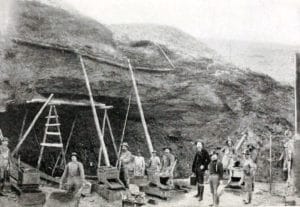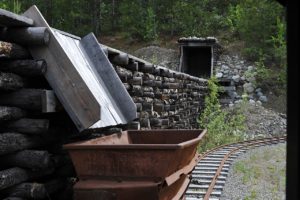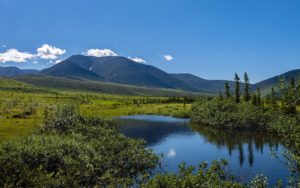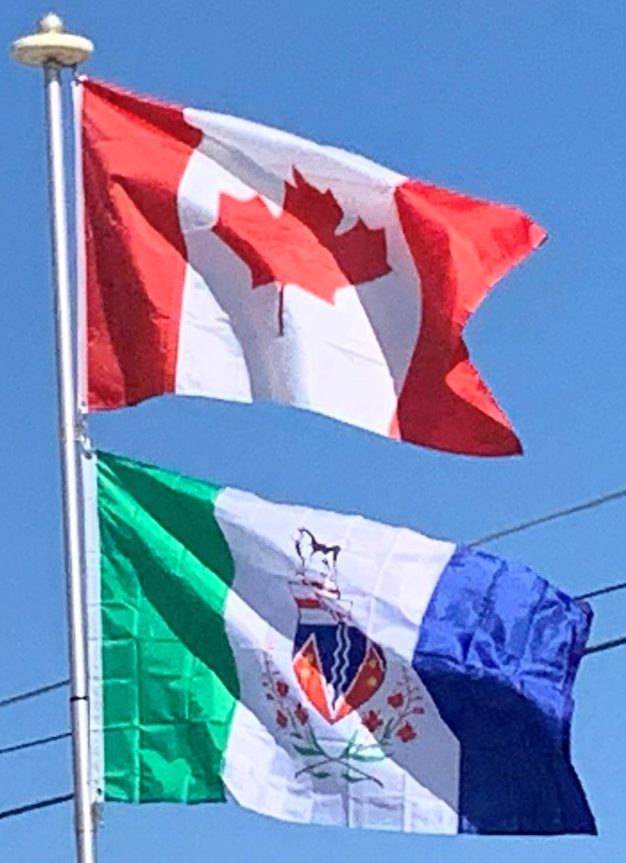The volcanic eruption of Mount Churchill in approximately 800 AD in what is now the U.S. state of Alaska blanketed southern Yukon with a layer of ash which can still be seen along the Klondike Highway, and which forms part of the oral tradition of First Nations peoples in Yukon and further south in Canada.
Coastal and inland First Nations had extensive trading networks. European incursions into the area began early in the 19th century with the fur trade, followed by missionaries. By the 1870s and 1880s gold miners began to arrive.

This drove a population increase that justified the establishment of a police force, just in time for the start of the Klondike Gold Rush in 1897. The increased population coming with the gold rush led to the separation of the Yukon district from the Northwest Territories and the formation of the separate Yukon Territory in 1898.
A much more extensive history of the territory is available here.
Economy:
Yukon’s historical major industry was mining (lead, zinc, silver, gold, asbestos and copper). The government acquired the land from the Hudson’s Bay Company in 1870 and split it from the Northwest Territories in 1898 to fill the need for local government created by the population influx of the gold rush. Thousands of these prospectors moved to the territory, ushering a period of Yukon history recorded by authors such as Robert W. Service and Jack London. The memory of this period and the early days of the Royal Canadian Mounted Police, as well as the territory’s scenic wonders and outdoor recreation opportunities, makes tourism the second most important industry in the territory.

Manufacturing, including furniture, clothing, and handicrafts, follows in importance, along with hydroelectricity. The traditional industries of trapping and fishing have declined. Today, the government sector is by far the biggest employer in the territory, directly employing approximately 5,000 out of a labor force of 12,500, on a population of 36,500.
Yukon’s tourism motto is “Larger than life”. Yukon’s tourism relies heavily on its natural environment, and there are many organized outfitters and guides available for activities such as but not limited to hunting, angling, canoeing/kayaking, hiking, skiing, snowboarding, ice climbing and dog sledding. These activities are offered both in an organized setting or in the back-country, which is accessible by air or snowmobile. Yukon’s festivals and sporting events include the Adäka Cultural Festival, Yukon International Storytelling Festival, and the Yukon Sourdough Rendezvous. Yukon’s latitude enables the view of aurora borealis.

The Government of Yukon maintains a series of territorial parks including, parks (Herschel Island Qikiqtaruk Territorial Park, including Tombstone Territorial Park, and Fishing Branch Ni’iinlii’njik Park. Coal River Springs Territorial Park) Parks Canada, a federal agency of the Government of Canada, also maintains three national parks and reserves within the territory, Kluane National Park and Reserve, Ivvavik National Park, and Vuntut National Park.
Yukon is also home to 12 National Historic Sites of Canada. The sites are also administered by Parks Canada, with five of the 12 sites being located within national parks. The territory is host to a number of museums, including the Copperbelt Railway & Mining Museum, the SS Klondike boat museum, the Yukon Beringia Interpretive Centre in Whitehorse; as well as the Keno City Mining Museum in Keno City. The territory also holds a number of enterprises that allows tourists to experience pre-colonial and modern cultures of Yukon’s First Nations and Inuit peoples.
Transportation:
Before modern forms of transportation, the rivers and mountain passes were the main transportation routes for the coastal Tlingit people trading with the Athabascans of which the Chilkoot Pass and Dalton Trail, as well as the first Europeans.
